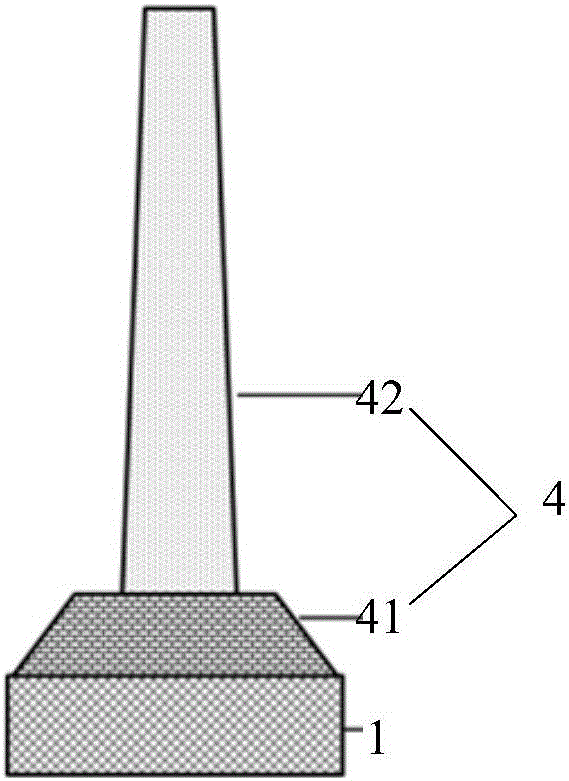Biological recognition device and biological recognition method
A technology of biometric identification and acquisition unit, applied in the field of biometric identification, can solve the problems that the detection value is not the real distance value, the sensor receives the wrong signal, etc., and achieve the effect of enhancing security, wide application range and high precision
- Summary
- Abstract
- Description
- Claims
- Application Information
AI Technical Summary
Problems solved by technology
Method used
Image
Examples
Embodiment 1
[0030] An embodiment of the present invention provides a biometric identification device, which includes a plurality of micro-acquisition units and a processing unit 1 arranged in a preset array: wherein:
[0031] Each micro-acquisition unit is used to collect first signals corresponding to troughs and sweat pores on the fingerprint, and second signals corresponding to ridges, and convert the first and second signals into electrical signals and send them to the processing unit.
[0032] The processing unit is used for identifying at least one of troughs, ridges and sweat pores on the fingerprint according to the electrical signals sent by the multiple micro-acquisition units.
[0033] The specific size of each micro-acquisition unit can be set according to needs, so as to ensure that it can identify troughs, ridges and sweat pores.
[0034] Specifically, the processing unit includes an integrated circuit layer.
[0035] The working principle of the processing unit to identify...
Embodiment 2
[0041] The biometric identification device provided in this embodiment is similar to the biometric identification device provided in Embodiment 1 above, and the similarities between the two will not be repeated here, and only the differences between the two will be described below.
[0042] specifically, figure 1 and figure 2 It is a schematic structural diagram of two biometric identification devices provided in this embodiment. In this embodiment, the micro-acquisition unit 4 includes a piezoelectric material layer 41; wherein the piezoelectric material layer 41 is used to collect pressure signals corresponding to valleys, ridges and sweat pores on the fingerprint and convert them into electrical signals.
[0043] Specifically, since the troughs and sweat pores are concave relative to the ridges, when the fingerprint touches the micro-collection unit 4, the pressure signal sensed by the corresponding micro-collection unit 4 at the position of the troughs and sweat pores is...
Embodiment 3
[0055] The biometric identification device provided in this embodiment is similar to the biometric identification devices provided in the above-mentioned embodiments 1 and 2, and the similarities between the two will not be repeated here, and only the differences between the two will be described below.
[0056] specifically, Figure 5 is a schematic structural diagram of the biometric identification device in this embodiment. In this example, if Figure 5 As shown, the micro-acquisition unit 4 includes a capacitance formed by two electrodes 5, and senses signals through capacitance changes. Specifically, since the troughs and sweat pores are concave relative to the ridges, when a fingerprint touches a plurality of micro-collection units 4, the corresponding micro-collection units 4 at the positions of the troughs and sweat pores cannot be in contact with the finger. Therefore, If the capacitance does not change, the electrical signal brought by the capacitance change is 0, ...
PUM
 Login to View More
Login to View More Abstract
Description
Claims
Application Information
 Login to View More
Login to View More - R&D
- Intellectual Property
- Life Sciences
- Materials
- Tech Scout
- Unparalleled Data Quality
- Higher Quality Content
- 60% Fewer Hallucinations
Browse by: Latest US Patents, China's latest patents, Technical Efficacy Thesaurus, Application Domain, Technology Topic, Popular Technical Reports.
© 2025 PatSnap. All rights reserved.Legal|Privacy policy|Modern Slavery Act Transparency Statement|Sitemap|About US| Contact US: help@patsnap.com



